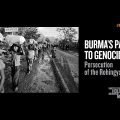Plz like/comments/share & subscribe
Conversation with Binode Sinha !!! Guwahati
#Sri Binode Sinha is a true social worker and devotee of #Radha Krishna. Now he was settled in #Bhangagarh area at #Guwahati city. The #Bishnupriya Manipuris are a group of #Indo-Aryan people that are indigenous to the Indian state of #Manipur and are also found in #neighbouring Assam, #Tripura and northeastern #Bangladesh. They speak the #Bishnupriya Manipuri language, which is of #Indo-Aryan origin. The most distinctive feature of the language is it replete with #Tibetan-Burmese (Meitei) elements. The culture of the people is almost identical with that of the #Meiteis, with the exception of a few folk practices which are prevalent among the #Meiteis.
#Culture
The religious customs and traditions of #Bishnupriya Manipuris are unique. They are organised in such a manner that in temple institutions those reveal the real festivity and reflect the curious character of #socio-religious life of the valley.
Fine Arts: During the reign of king #Bhagya Chandra, towards the 18th century, Vaishnavism became very popular in #Manipur. As a result, #Vaishnav Palakirtan with #Mridanga and #Kartalaa became the most prominent factor in #Bishnupriya manipuri fine arts. #Rasleela is the most important aspect of their culture. Here in Ras-dance the philosophy of the manipuris is the basis on which the philosophy of the #Vaisnavism is the body and plot of the dances with the essence of the #Bhagavata philosophy.
Festivals: To #Bishnupriya Manipuris, festivals are the symbols of their cultural, social and religious aspirations which, besides removing the monotony of life by providing physical diversions, mental recreation and emotional outlet, help them lead a better and fuller life. #Bishu, #Rathyatra or #Kang-Festival, #Kartika festival, #Maharas Purnima, #Phaguwa or #yaosang festival etc. are their major festivals.
#Bishnupuriya bride
#Marriage: Marriage in society is based on the Hindu pattern and mostly Aryan and non-Aryan elements having certain traditional customs. Marriage is restricted within the #gutros in BPM community.
Food: Rice, vegetable and fish are principle foodstuffs of both the #Bishnupriyas. Meat and alcohol is strictly prohibited in the society. In religious and social feasts, even fish is never used. Hidol is an important items of the #Bishnupriyas to make #Paltoi and #Irolpa.
Dress and Ornaments: Traditional dress used by the men is called #Pachhati – about five feet long cloth manufactured by themselves which worn round the waist. Women usually wear blouses with traditional #Lahing/Fanek or #Chakshabi (a coarse cloth with lengthwise stripes and embroidered on both sides lengthwise) with an #Enaphi (Single or #multicolor coarse cloth with laces on both ends) and an #Angei or blouse.
Religion and observances: Mass propagation of Hindu customs and traditions in the society is the indicator of their reverence towards the Hindu deities and temples.
#Bishnupriya Manipuri caste is divided into two parts or classes- one is called #Rajargang and the other one is known as #Madoigang. The group #Madoigang mainly inhabit #Kamalpur, India.
Language: Although #Meitei is the official language and #lingua franca in the state of #Manipur, #Bishnupriya Manipuri people have their own language, with about 120,000 speakers according to the 2001 census. Unlike Meitei, which belongs to the #Tibeto-Burman family, #Bishnupriya Manipuri is an #Indo-Aryan language, like the majority of North Indian languages. #Bishnupriya Manipuri belongs to the Eastern group of the family and is written in the Bengali–Assamese script, and although it is close to #Bengali, #Assamese, and other related dialects, it is a distinct and separate language from all of them. Just as the #Bishnupriya Manipuri people share most of their culture with the #Meiteis, their language is heavily influenced by #Meitei.








